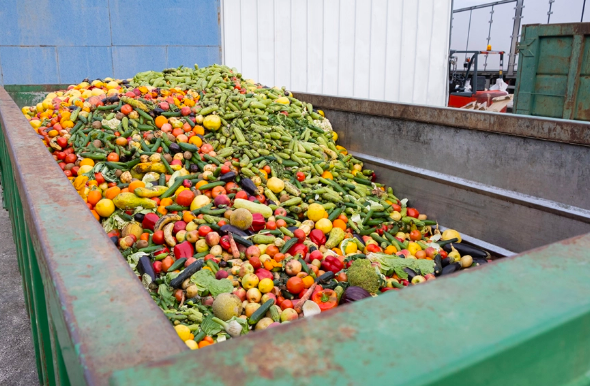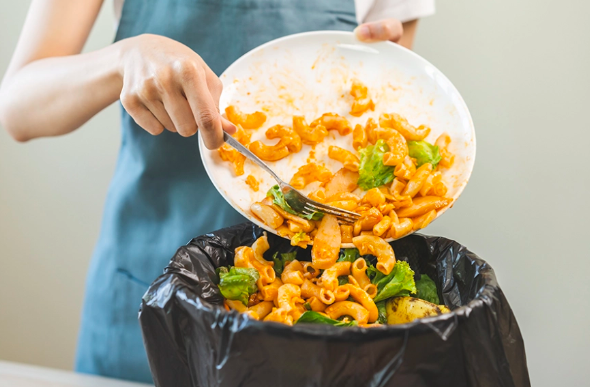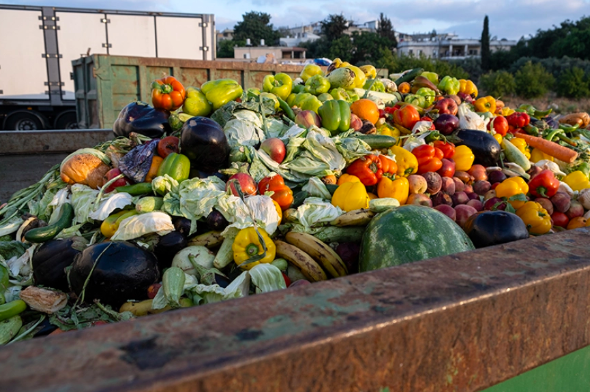Have you ever wondered why our refrigerators become overstuffed with meats, vegetables, and various fruits, only to discover at week’s end that much of it—often the majority—must be discarded due to spoilage? Many of us carry the imprint of our grandmothers buying canned goods, pasta, sauces, and juices in bulk, left to languish in cabinets and eventually thrown out years later, unused and expired. Some attribute this to a “possession syndrome,” though this rationale is not entirely accurate. This wasteful practice stems from food spoiling before consumption or miscalculating portions in cooking, a phenomenon not restricted to the elderly or those who lived through wartime famine.

Yuval Noah Harari, an Israeli historian and author of “Sapiens,” offers a compelling explanation. He posits that despite our evolutionary progress from Stone Age ancestors who feared scarcity and hoarded food, our instincts haven’t adapted to our current reality. Even in modern high-rise apartments with packed refrigerators, our primal instincts persist in anticipating scarcity as if we’re still on the savannah. This perspective sheds light on why we discard significant amounts of food, though it’s not the sole explanation.
But how much food constitutes “so much”? According to the Food and Agriculture Organization (FAO) of the United Nations, approximately 1.3 billion tons of food are wasted globally each year, with one-third of annual food production ending up as waste. These figures, mere statistics on a page, carry profound economic and environmental repercussions.

Food waste statistics reveal a complex issue spanning production, processing, distribution, and retail. In developing countries, inadequate storage, poor transport infrastructure, and limited market access contribute to substantial post-harvest losses. Conversely, in developed nations, stringent quality standards and the practice of discarding unsold goods are primary contributors. For instance, in India, deficient infrastructure leads to the loss of 21 tons of grain annually during transit, highlighting challenges faced by countries with high poverty rates.
On a global scale, the United States leads in food waste, discarding about 40 million tons annually, equivalent to 100 kg per person. The UK follows with approximately 9.5 million tons, averaging 71 kg per person. China and India, due to their vast populations, contribute significantly with 91.6 million and 68.8 million tons wasted yearly, respectively.
Europe, too, faces substantial food waste, with EU households discarding food worth €100 billion annually—a sum equivalent to Nestle’s yearly revenue. Greece stands out negatively, surpassing the global average by nearly double in food waste per capita and ranking highest in Europe according to the Food Waste Index report. Greek citizens discard an average of 142 kg of food annually, contrasting starkly with the global average of 74 kg. Malta is the only other European country exceeding the 100 kg per capita mark, followed by Hungary and Luxembourg at 94 kg and 91 kg respectively.

What about these quantities? How should we interpret them? Simply put, when viewed collectively, it becomes clear that the impacts of such waste are far greater than we might imagine, both economically and environmentally. Consider the amount of plastic food packaging that ends up in landfills, or how food prices have risen as a consequence.
Economic Impact of Food Waste
The economic repercussions of food waste are profound. According to the FAO, food waste costs the global economy approximately $940 billion annually. This figure encompasses expenses related to production, transportation, and disposal of discarded food. For businesses, food waste translates into significant revenue loss, particularly affecting retailers and restaurants that regularly deal with unsold excess food.
Furthermore, food waste drives up consumer prices. When food is wasted, supply diminishes while demand remains constant, leading to increased prices. This financial burden disproportionately affects low-income households, exacerbating food insecurity and poverty.
Environmental Impact of Food Waste
The environmental consequences of food waste are equally alarming. As reported by the BBC, if food waste were a country, it would rank as the third largest emitter of carbon dioxide globally, following China and the USA. This is because food production requires substantial resources such as water, land, energy, and labor. When food is wasted, these resources are squandered. The FAO estimates that food waste contributes to about 8% of global greenhouse gas emissions, largely due to methane production from decomposing food in landfills, a potent greenhouse gas.
Moreover, food waste significantly impacts land use. Approximately 28% of the world’s agricultural land is used to produce food that ultimately goes uneaten. This contributes to deforestation, loss of biodiversity, and soil degradation. Water resources are also severely affected; an estimated 24% of the total water used for agriculture is lost through food waste, exacerbating the scarcity of fresh water in many regions.
Smart shopping
This involves creating a weekly meal plan and crafting a shopping list accordingly, ensuring purchases align with actual needs and curbing impulsive buying tendencies. Avoiding overbuying is crucial; adhering strictly to the list helps resist bulk purchases, especially of perishable items. Before heading to the supermarket, check your pantry to prevent redundant purchases.
Proper storage
This entails understanding diverse storage requirements: tomatoes and potatoes, for instance, fare better outside the refrigerator, whereas leafy greens benefit from refrigeration. Utilize airtight containers to prolong freshness, organizing the fridge and pantry so older items are prioritized over newer ones.
Cooking smart
Repurposing leftovers creatively; for example, transform roasted vegetables into salads or pasta dishes. Serve smaller portions to minimize plate waste and consider batch cooking and freezing for future consumption, reducing the risk of food spoilage.
Careful consumption
Noting expiration dates, which denote quality rather than safety; consume food promptly to avoid spoilage.
Composting
Beneficial for converting food waste into nutrient-rich soil. Start a compost bin or explore community composting options if home composting isn’t feasible.
To minimize waste during food preparation, utilize entire produce items and learn preservation techniques like canning, pickling, and drying to extend the shelf life of seasonal produce.
Resourcefulness with waste
includes using vegetable scraps to make homemade stocks and broths or regrowing certain vegetables from scraps.
Engage with technology
Using stock management apps to monitor household inventory and participate in online communities focused on zero waste and sustainable living for guidance and support.
Considering global food production is adequate to feed everyone, yet millions of children die annually from hunger, adopting a food-conscious lifestyle becomes more imperative. While reminiscent of the cliché “eat your food, children in Africa are starving,” these stark realities compel a more conscientious approach to food consumption.
Ask me anything
Explore related questions





